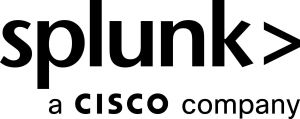Enable Self-Service Observability
Your engineers are probably overwhelmed with disjointed and outdated tools. They’re often trapped in toolchain management instead of focusing on building and shipping software for your users. When every team rolls its own software delivery tooling, there's no common language across teams and the lack of shared visibility means developers spend more time in large war rooms troubleshooting problems.
Central tools teams (commonly known as platform engineering teams) are responsible for rolling out reliable and standardized internal developer platforms and tooling across teams to improve the developer experience and productivity, while managing costs and usage. However, most tools are too rigid to meet every engineer’s needs. Furthermore, because many tools in the market are built for team-specific instead of enterprise-specific needs, platform engineering teams have a hard time controlling access, monitoring usage, and operationalizing at scale. This leads to low adoption, developer toil, delayed software deliveries, and unexpectedly high costs.
How can Splunk Observability Cloud help with enabling self-service observability?
Get started quickly with a single open and extensible agent
Splunk Observability Cloud is 100% OpenTelemetry-native, which allows you to instrument data one time, so you can quickly deploy and start building applications, regardless of the scale. OpenTelemetry also helps standardize data management across your teams while remaining highly extensible and flexible to cater to every engineer’s needs. The result is fewer inconsistencies and trust issues as well as lower total cost of ownership.
Automate monitoring safely with code-level observability
Splunk Observability Cloud provides full API operability and Terraform support, which enables an observability as code approach. With this, you get visibility and context at the code level, which helps you confidently and programmatically build, manage, and audit applications. This allows you to automate changes in your software or quickly roll them back if something goes wrong.
Manage costs across teams
Centralized tools teams can ensure that their budget is efficiently utilized with enterprise cost controls across Splunk Observability Cloud, including access tokens and metrics pipeline management. With metrics pipeline management, your platform engineers can scale observability while controlling costs by aggregating metrics data and filtering out under-utilized data. Splunk Observability Cloud also offers flexible licensing and monthly average measurement to avoid punitive overages.
Provide guardrails with flexible and granular access control
Admins can easily protect their data with role-based access controls (RBAC) and single sign-on (SSO) with Splunk Cloud Platform so they can centrally manage user privileges and ensure that data is safe from accidental changes or leaks. Access tokens can also be used for fine-grained control of who can see individual objects in your organization.
Streamline workflows with ready-to-use templates
Mirrored dashboards and Terraform support allow you to create reusable observability charts, dashboards, detectors, and configuration, reducing toil even as you scale. OpenTelemetry helps extend that support across a broad range of languages and platforms
Use case guidance
- Deploying and troubleshooting OpenTelemetry successfully
- Learn how to quickly and confidently carry out your OpenTelemetry deployment with the the Splunk Distribution of the OpenTelemetry Collector.
- Instrumenting LLM applications with OpenLLMetry and Splunk
- This article demonstrates how OpenTelemetry and Splunk Observability Cloud can be used to ensure large language model applications are observable.
- Monitoring LangChain LLM applications with Splunk Observability Cloud
- Learn to update an LLM application with the LangChain framework to ensure context is retained in subsequent requests to OpenAI and make it easy to switch between LLM providers. Also learn to update an LLM application so it’s able to answer questions from a custom set of data.

